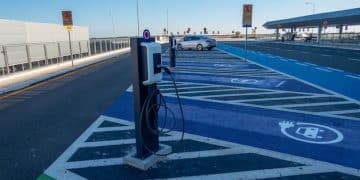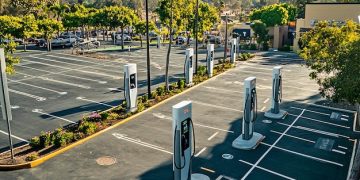EV charging infrastructure expansion in rural areas
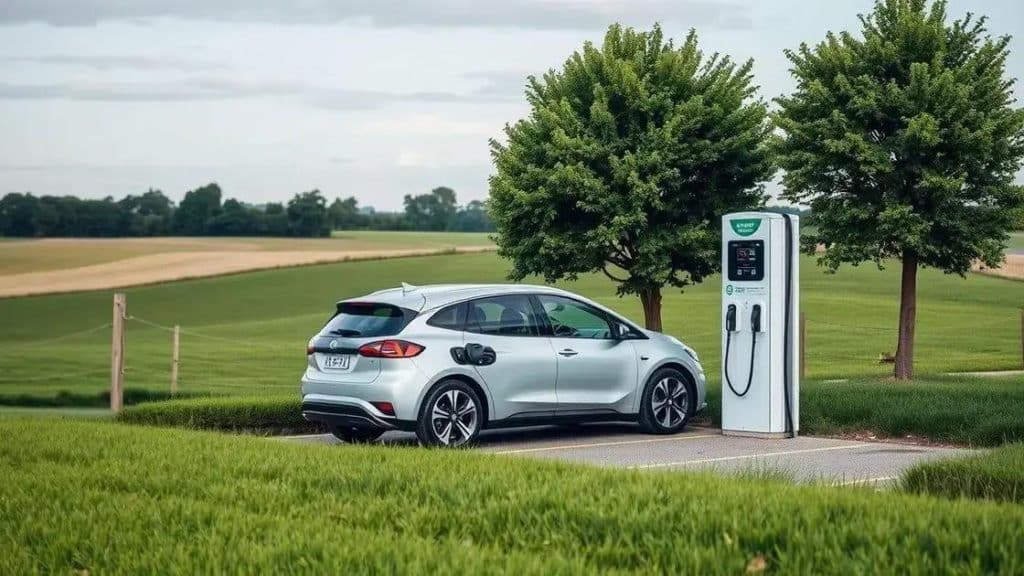
The expansion of EV charging infrastructure in rural areas is vital for supporting electric vehicle adoption, overcoming barriers through strategic funding, technology advancements, and community engagement.
EV charging infrastructure expansion in rural areas is becoming increasingly vital. As electric vehicles gain popularity, ensuring convenient access to charging stations in these regions can significantly boost adoption and address range anxiety. What steps can be taken to improve this situation?
Current state of EV charging in rural areas
The current state of EV charging in rural areas reflects a mix of progress and challenges. While the demand for electric vehicles is increasing, many rural regions lack necessary infrastructure to support them. Understanding this state is crucial for future developments.
Challenges in Current Infrastructure
One of the primary challenges facing rural EV charging is the limited number of charging stations. Many regions have only a few chargers, making long-distance travel difficult for EV owners. More charging points are needed to ensure that these areas can adequately serve the electric vehicle population.
- Inadequate coverage of charging stations
- Lack of fast chargers in remote locations
- High installation costs for new stations
Furthermore, electricity availability can be an issue. Rural areas often face less reliable power grids that complicate the installation of EV chargers. This not only affects the feasibility of charging stations but also raises concerns about energy supply and demand.
Recent Developments
Despite these challenges, recent developments show promise. Local governments and organizations are increasingly recognizing the importance of expanding EV charging infrastructure. Grants and funding are becoming available to support the establishment of more charging points.
- Public-private partnerships are on the rise
- Innovative charging solutions, like solar-powered stations, are emerging
- Community initiatives are encouraging local installations
These initiatives indicate a shift towards better support for electric vehicles in rural areas, yet more work is required. Boosting awareness about EV benefits among rural residents is essential. This can encourage them to adopt electric vehicles while also highlighting the economic benefits charging stations can bring to local communities.
Barriers to infrastructure expansion
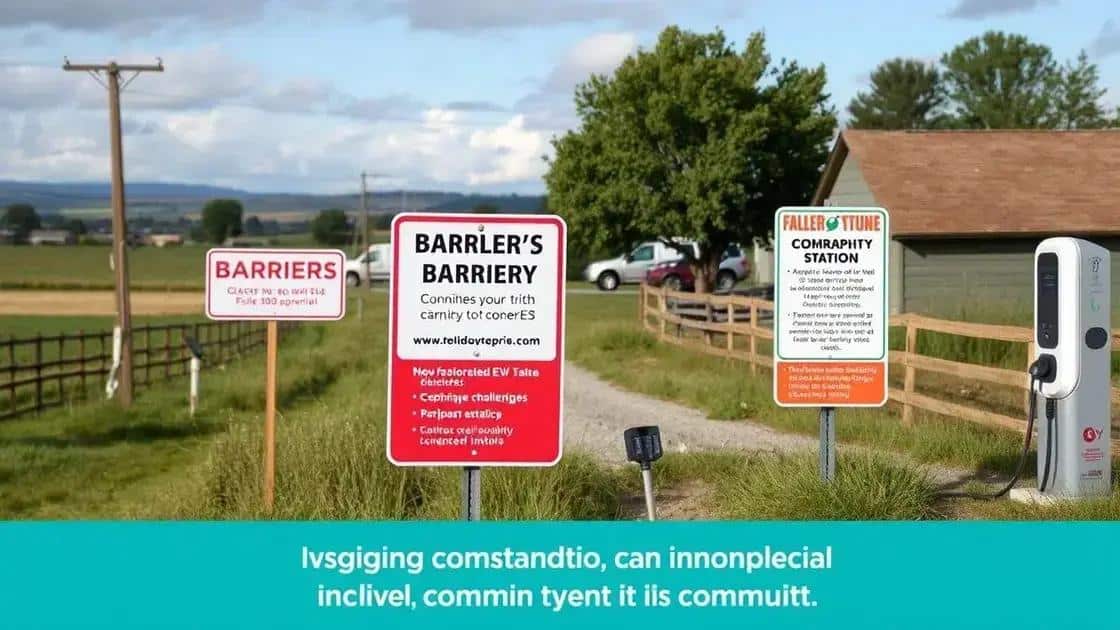
Understanding the barriers to infrastructure expansion for EV charging in rural areas is essential for making progress. These barriers can slow down the growth and accessibility of charging stations, limiting the adoption of electric vehicles.
Funding and Financial Challenges
One significant challenge is the lack of funding. Many rural municipalities struggle to allocate budget for new projects, especially ones that involve technology. This can delay the installation of much-needed chargers.
- High up-front costs for station installation
- Limited access to governmental grants and subsidies
- Financial uncertainty in rural areas
Additionally, potential investors may be hesitant to fund EV infrastructure due to unclear returns on investment. This hesitation can dramatically hinder local progress.
Geographic Limitations
Geography also plays a role in infrastructure development. Rural areas often have sparse populations, making it difficult to justify the installation of charging points at every desired location. As a result, many potential charging sites may be overlooked.
- Long distances between towns
- Low demand in certain regions
- Limited access to electrical grids
Furthermore, regulatory hurdles can emerge. Zoning laws and local regulations may restrict where charging stations can be placed, complicating expansion efforts.
Raising awareness about the advantages of EVs in rural areas can help overcome some of these barriers. Education initiatives can lead to increased public support and, in turn, prompt local governments to take action.
Successful case studies of rural charging stations
Several successful case studies of rural charging stations demonstrate the potential for expanding EV infrastructure in less populated areas. These examples highlight innovative strategies that can inspire other regions facing similar challenges.
Case Study 1: Town X’s Community Chargers
In Town X, the local government partnered with a private company to install community EV chargers. By leveraging federal grants and local funding, they successfully placed chargers in key locations. This initiative not only provided convenience for residents but also attracted visitors to the area.
- Chargers installed at parks and community centers
- Increased tourism by promoting electric vehicle accessibility
- Community outreach campaigns raised awareness
This project has resulted in a notable increase in electric vehicle usage in the region, demonstrating how strategic placements can make a real difference.
Case Study 2: Solar-Powered Charging Station
Another notable example comes from a rural village that opted for solar-powered charging stations. This approach addressed both charging needs and local energy concerns. By utilizing renewable energy, the village created a sustainable solution that attracts environmentally-conscious visitors.
- Reduced electricity costs through solar energy
- Local business involvement increased funding
- Promoted sustainability among residents
The success of this case shows how integrating green technology can benefit both the environment and local economies.
These examples illustrate that, despite the challenges, effective planning and community engagement can lead to successful outcomes. By learning from these case studies, other rural areas can create their own models for EV charging infrastructure expansion.
Future outlook for EV infrastructure development
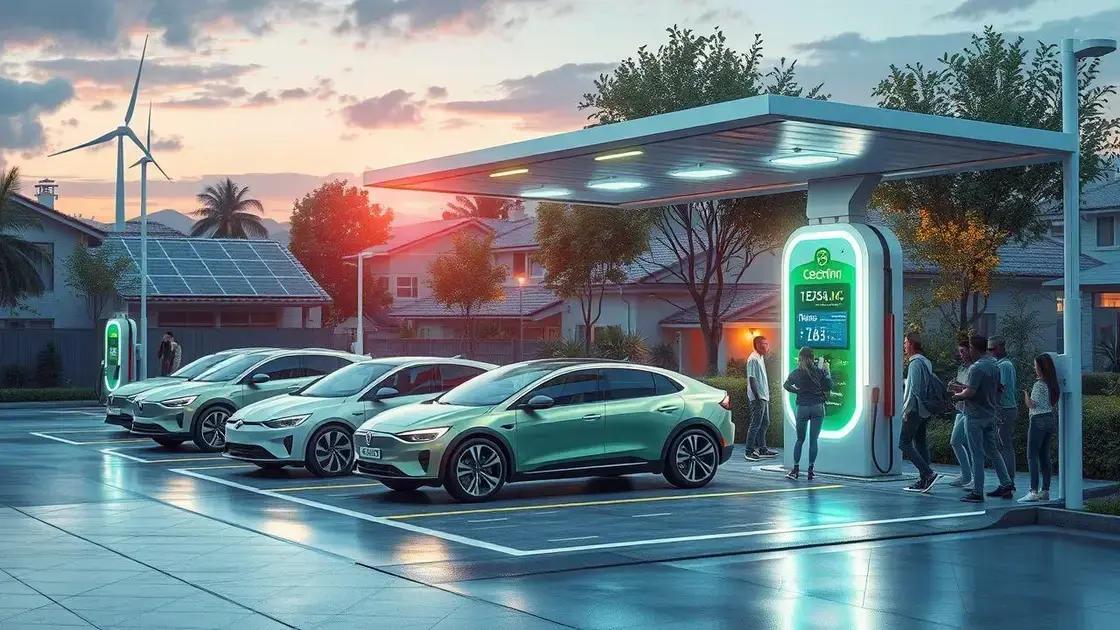
The future outlook for EV infrastructure development is promising as technology and demand for electric vehicles continue to grow. Investing in infrastructure is essential to support the increasing number of electric vehicles on the road.
Technology Advancements
As technology evolves, charging solutions will become more efficient and accessible. New developments in charging speed and energy sources are on the horizon. Innovations such as fast-charging stations and wireless charging systems are already being tested in various locations.
- Enhanced battery technology reduces charging time
- Smart grid systems improve energy management
- Integration of renewable energy sources, like solar and wind
These advancements will ensure that charging stations are more convenient and reliable for users in both urban and rural areas.
Government Initiatives
Government policies are also expected to play a significant role. Many countries are committing to stricter emissions regulations, leading to investments in EV infrastructure. Incentives for businesses and individuals to install charging stations will increase.
- Grants available for local communities
- Tax breaks for businesses implementing EV solutions
- Public-private partnerships to fund infrastructure projects
These initiatives can accelerate the implementation of charging stations and make electric vehicles more appealing to potential buyers.
Moreover, collaboration between stakeholders, including local governments, utility companies, and communities, will be vital. By working together, they can identify the best locations for charging stations, ensuring optimal coverage in rural areas.
The focus on education and awareness will also grow. Informing the public about the benefits of electric vehicles and available infrastructure can help drive adoption. Overall, the future of EV infrastructure development looks bright, with numerous opportunities for expansion and improvement.
In conclusion, the expansion of EV charging infrastructure in rural areas presents a significant opportunity for growth and sustainability. By overcoming barriers and learning from successful case studies, communities can build a robust network of charging stations. This will not only facilitate the adoption of electric vehicles but also contribute to environmental goals. With a focus on technological advancements, government support, and community collaboration, the future looks bright for rural EV infrastructure development.
FAQ – Frequently Asked Questions about EV Charging Infrastructure in Rural Areas
What are the main challenges for EV infrastructure in rural areas?
The main challenges include limited funding, geographic barriers, and a lack of public awareness about the benefits of electric vehicles.
How can successful case studies help other rural communities?
Successful case studies provide valuable insights into effective strategies and collaborative approaches that can be adapted to similar situations in other rural areas.
What role does government support play in expanding EV charging stations?
Government support is crucial as it can offer incentives, grants, and policies that facilitate the installation and maintenance of EV charging infrastructure.
What technological advancements are expected in EV charging solutions?
Future advancements include faster charging technologies, the integration of renewable energy sources, and smart grid systems that enhance energy management.
